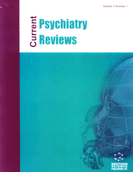Abstract
Event-related potentials (ERPs) provide an objective index of neurocognitive abnormality or dysfunction in neuropsychiatric disorders. Auditory mismatch negativity (aMMN), which was discovered in the 1980s, is one unique type of ERP. Several lines of evidence suggest that it reflects auditory preattentive (automatic) information processing and the function of glutamatergic N-methyl-D-aspartate receptors. Many studies also have suggested that aMMN is a promising biomarker for some psychiatric disorders such as schizophrenia. Prospective studies combining analyses of several biomarkers, including aMMN, in schizophrenia patients from the prodromal period, are underway. Meanwhile, the existence of a visual counterpart of aMMN (vMMN) has been disputed, and a genuine vMMN was only confirmed in the last decade. Thus, there have been a relatively small number of vMMN studies compared with studies of aMMN, and the mechanism underlying vMMN is still unclear. However, it is well known that abnormal auditory and visual sensory information processing is present in psychiatric disorders, and vMMN is an important component of ERPs studied in psychiatric patients. The aim of this review is to provide an overview of recent aMMN and vMMN findings in several psychiatric disorders, including schizophrenia, major depression, Alzheimer’s disease, and developmental disorders. In doing so, we highlight their potential use as biomarkers of psychiatric disorders.
Keywords: Auditory information processing, Biomarker, Developmental disorder, Event-related potential, Major depression, Mismatch negativity, Schizophrenia, Visual information processing, ERPs, phase reversal
 3
3



